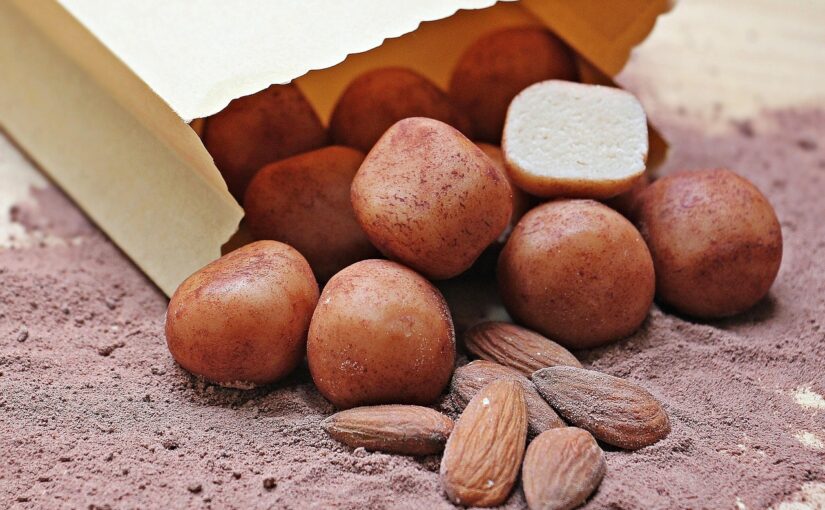Marzipan potatoes are the sweet treat that winter would hardly feel complete without. Soft, delicately flavored, and wonderfully aromatic, they awaken childhood memories with every bite. The harmony of almonds, sugar, and a hint of rose water creates a flavor that is irresistible and festive. You will find them on nearly every Christmas cookie plate, charming both young and old. Their simplicity makes them a perfect homemade gift, as well as a delightful indulgence for yourself.
Ingredients 🛒
- 200 g ground almonds
- 100 g powdered sugar
- ½–1 teaspoon rose water (to taste)
- 1–2 teaspoons cocoa powder for rolling
Preparation 👩🍳
- Mix ground almonds and powdered sugar in a bowl.
- Add rose water drop by drop and knead into a smooth marzipan mixture. If the dough feels too dry, add a bit more rose water.
- Roll the mixture into small balls about the size of a cherry.
- Place the cocoa powder on a plate and roll the marzipan balls until they resemble little potatoes.
- Store in a cool place until ready to serve.
Serving Suggestion 🍫☕
Marzipan potatoes taste best freshly made and enjoyed with a hot drink. Pair them with rich coffee, strong black tea, or festive mulled wine. Arranged on a pretty dish, they not only taste heavenly but also look charming on your holiday table.
From the Orient to Lübeck: the Fascinating Story of Marzipan 🌍📜
The story of marzipan stretches back more than a thousand years, with almonds and sugar forming a combination beloved across cultures. In ancient Greece, mixtures of almonds and honey were already described as a delicacy. By the Middle Ages, marzipan was produced in the Orient, and the Persian physician Rhazes (around 865–925) praised the blend of almonds and sugar as a nutritious remedy.
Through trade routes, marzipan made its way into Europe. One early form was the famous “Mazapán de Toledo”, said to have been created in its present form by nuns in San Clemente. In Venice, “Marzapane” became a favorite of the aristocracy, while apothecaries sold it as a cure for stomach troubles, bloating, and even more ambitious ailments.
In Germany, two Hanseatic cities became especially linked to marzipan: Lübeck and Königsberg. Lübeck’s reputation for outstanding marzipan grew during the 19th century, and in 1996 “Lübecker Marzipan” was granted protected geographical status within the EU. Königsberg’s version was distinctive for being roasted, though production there has since faded.
Even the word “marzipan” carries mystery. Some trace it to the Italian “Marzapane,” others to the Venetian “Marci panis,” meaning the bread of Saint Mark. Some theories suggest origins as far as Persia, Portugal, or even Myanmar’s Martaban, once famous for its pottery jars. No matter its etymology, marzipan has firmly rooted itself in German culinary tradition. Whether shaped into elaborate figures, baked into stollen, or rolled into these humble little potatoes, marzipan remains a festive treat that connects us with centuries of history and taste.
Image by NoName_13.
